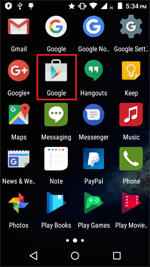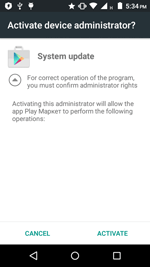- Apr 6, 2016
- 440
Modern Android banking Trojans are created by virus writers and sold for serious sums as commercial products via underground Internet platforms. However, the source code of one such malicious application was recently made public on a hacker forum, along with instructions on how to use it. Doctor Web security researchers believe that this may lead to a significant increase in the number of attacks involving Android banking Trojans.
The virus writers published the source code of the new malicious application just one month ago, but Doctor Web security researchers have already detected an Android Banker that has been created using the information published by the cybercriminals. This Trojan, dubbed Android.BankBot.149.origin, is distributed under the guise of benign programs. When a smartphone or tablet user installs and runs Android.BankBot.149.origin, the banker prompts the user to grant it administrative privileges to hinder its removal from the system. After that it hides itself from the user by removing its shortcut from the home screen.


Then Android.BankBot.149.origin connects to the command and control (C&C) server and awaits instructions. The Trojan can execute the following actions:



The Trojan not only steals mobile banking login credentials but also bank card information belonging to the owner of the compromised device. For this purpose, Android.BankBot.149.origin tracks the launch of such popular applications as Facebook, Viber, Youtube, WhatsApp, Uber, Snapchat, WeChat, imo, Instagram, Twitter, and Play Store and displays a phishing dialog resembling the one used to make purchases on Google Play.



When an SMS message arrives, the Trojan turns off all sounds and vibrations, sends the message content to the cybercriminals, and attempts to delete the original messages from the list of incoming SMS. As a result, a user could miss not only bank notifications about the unplanned transactions but also other incoming messages.
Android.BankBot.149.origin uploads all the stolen data on the C&C server, and it becomes available on the administration panel. This helps cybercriminals to not only obtain the information they are interested in but also control the malicious application.

In general, the possibilities of this Trojan are quite standard for modern Android bankers. However, as cybercriminals created it with publicly available information, one can anticipate that many Trojans similar to it will appear. Dr.Web for Android successfully detects Android.BankBot.149.origin; therefore, this malicious program poses no threat to our users.
More about this Trojan
The virus writers published the source code of the new malicious application just one month ago, but Doctor Web security researchers have already detected an Android Banker that has been created using the information published by the cybercriminals. This Trojan, dubbed Android.BankBot.149.origin, is distributed under the guise of benign programs. When a smartphone or tablet user installs and runs Android.BankBot.149.origin, the banker prompts the user to grant it administrative privileges to hinder its removal from the system. After that it hides itself from the user by removing its shortcut from the home screen.


Then Android.BankBot.149.origin connects to the command and control (C&C) server and awaits instructions. The Trojan can execute the following actions:
- send SMS messages;
- intercept SMS messages;
- request administrator privileges;
- send USSD requests;
- obtain all contact list phone numbers;
- send SMS messages containing the text specified in a command to all contact list numbers;
- track device geolocation via GPS satellites;
- request additional permission on devices using the most recent Android versions to send SMS messages, make calls, and access the contact list and GPS receiver;
- receive an executable file containing a list of attacked banking applications;
- show phishing dialogs.



The Trojan not only steals mobile banking login credentials but also bank card information belonging to the owner of the compromised device. For this purpose, Android.BankBot.149.origin tracks the launch of such popular applications as Facebook, Viber, Youtube, WhatsApp, Uber, Snapchat, WeChat, imo, Instagram, Twitter, and Play Store and displays a phishing dialog resembling the one used to make purchases on Google Play.



When an SMS message arrives, the Trojan turns off all sounds and vibrations, sends the message content to the cybercriminals, and attempts to delete the original messages from the list of incoming SMS. As a result, a user could miss not only bank notifications about the unplanned transactions but also other incoming messages.
Android.BankBot.149.origin uploads all the stolen data on the C&C server, and it becomes available on the administration panel. This helps cybercriminals to not only obtain the information they are interested in but also control the malicious application.

In general, the possibilities of this Trojan are quite standard for modern Android bankers. However, as cybercriminals created it with publicly available information, one can anticipate that many Trojans similar to it will appear. Dr.Web for Android successfully detects Android.BankBot.149.origin; therefore, this malicious program poses no threat to our users.
More about this Trojan

